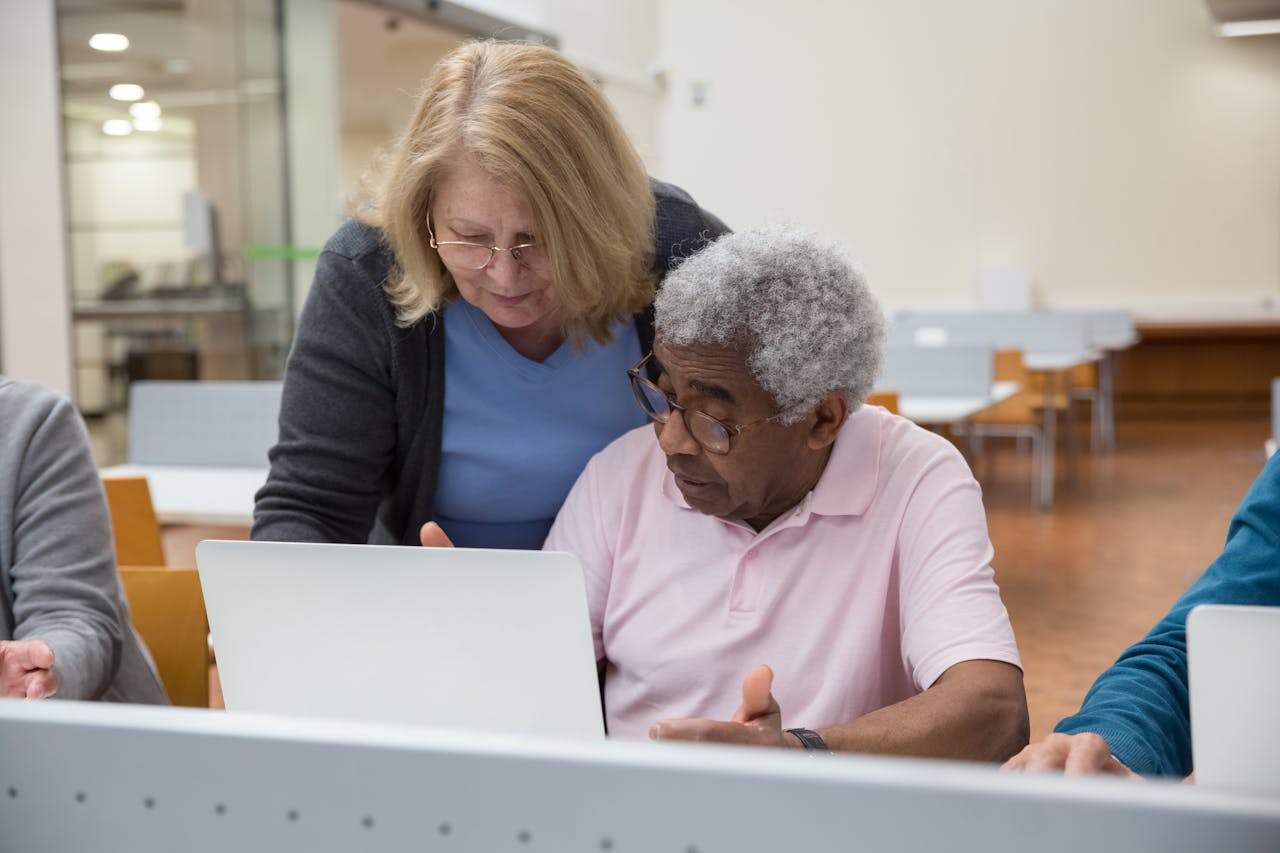Voice-controlled technology has undergone significant evolution since its inception, emerging as a key facilitator of accessibility in modern society. Originally conceived as a novelty, it has transformed into an essential tool that enhances everyday life for many users, particularly for individuals with disabilities. This technology enables users to operate various devices and applications through spoken commands, thereby minimizing the need for physical interaction. The applicability of voice-controlled devices for disabled individuals has expanded across different domains, including home automation, communication, and information retrieval.
The significance of voice technology stems from its ability to bridge the gap between individuals and their environment, promoting greater independence. For people with mobility impairments or other disabilities, traditional interfaces can be challenging or impossible to use. Voice recognition software addresses these challenges by offering a hands-free alternative that can seamlessly integrate with existing technology. Whether controlling smart home devices, sending messages, or searching for information online, individuals are empowered to engage with the digital world on their own terms. This empowerment is crucial as it not only enhances the quality of life but also fosters a sense of inclusion and autonomy.
Furthermore, as society becomes more aware of the needs of disabled individuals, the demand for innovative solutions like voice-controlled devices continues to rise. Companies are increasingly investing in research and development to refine these technologies, making them more responsive, accurate, and user-friendly. The enhancement of such devices paves the way for a more inclusive society where technology acts as an enabler rather than a barrier for individuals with disabilities. In this context, voice-controlled technology represents a significant advancement, fundamentally shifting how users interact with their surroundings and access essential services.
Understanding Disabilities and Daily Challenges
Disabilities encompass a wide range of physical, visual, auditory, and cognitive impairments, each presenting unique challenges that can significantly affect daily life. Physical disabilities might include conditions such as paralysis, muscular dystrophy, or arthritis, which can limit an individual’s mobility and ability to perform everyday tasks. These individuals often find it challenging to engage with their environment without assistance, making adaptive technologies essential for enhancing their independence.
Visual impairments, ranging from partial sight to complete blindness, present another set of obstacles. Individuals with these disabilities may struggle with reading, recognizing faces, or navigating unfamiliar spaces. The integration of voice-controlled devices for disabled individuals can significantly mitigate these challenges, providing them with auditory feedback and navigational assistance that enhance their experiences in various environments.
Auditory disabilities, which include hearing loss or deafness, can hinder communication and social interactions. Individuals may find it difficult to participate in conversations or access information. Voice-controlled technology can offer alternatives, such as transcription services or visual notifications, thus promoting inclusivity and engagement in everyday activities.
Cognitive impairments, such as those arising from conditions like ADHD, dyslexia, or traumatic brain injuries, can affect memory, attention, and organizational skills. These cognitive challenges often necessitate support systems to help individuals navigate daily tasks effectively. Adaptive technologies that employ voice control provide hands-free operation, allowing users to manage their devices seamlessly and stay organized without undue strain.
Overall, the importance of adaptive technologies, including voice-controlled devices for disabled individuals, cannot be overstated. They not only facilitate independence but also empower individuals to lead more fulfilling lives by overcoming the numerous challenges associated with various disabilities. Such technologies are vital in fostering an inclusive society where everyone can participate and thrive.
How Voice-Controlled Devices Work
Voice-controlled devices for disabled individuals rely on advanced technologies that facilitate seamless interaction through spoken commands. At the core of these devices is speech recognition technology, which converts spoken language into text. This process involves sound waves being captured by microphones, which then parse the audio signals and correlate them with known speech patterns. The accuracy of this technology has improved significantly, enabling users to speak naturally without needing to adjust their tone or enunciation for the device to understand their commands.
Natural language processing (NLP) further enhances this interaction by allowing devices to comprehend and interpret the context of spoken words. NLP algorithms analyze the syntax, semantics, and context of speech, enabling voice-controlled devices to respond appropriately. This is particularly beneficial for individuals with disabilities, as it provides a more intuitive interaction method that aligns with how humans naturally communicate. The integration of machine learning algorithms enables these systems to continuously improve their understanding of various accents and speaking styles, thus catering to a wider range of users.
Users interact with voice-controlled devices through various platforms, including smart speakers like Amazon Echo or Google Home, smartphones equipped with virtual assistants such as Siri or Google Assistant, and specialized assistive devices designed explicitly for individuals with disabilities. These devices enable users to execute a broad array of tasks, from controlling smart home integrations to sending messages or making phone calls, all through simple voice commands. As technology advances, more sophisticated applications of voice recognition and NLP are being developed, further enhancing the adaptability and effectiveness of voice-controlled devices for disabled individuals.
Benefits of Voice-Controlled Devices for Disabled Individuals
Voice-controlled devices for disabled individuals significantly enhance their quality of life by promoting independence and facilitating communication. These technological innovations allow users to operate various functions hands-free, which is particularly advantageous for those with mobility impairments. Through simple voice commands, individuals can control lighting, temperature, and even appliances, fostering a more autonomous living environment. This newfound independence can greatly enhance self-esteem and overall well-being.
Additionally, voice-controlled devices play a crucial role in improving social interaction for people with disabilities. Many individuals with communication challenges can use these systems to interact with family and friends more easily. For instance, by leveraging voice-to-text features, users can send messages, make phone calls, or engage in video chats without the need for traditional input methods. This capability diminishes barriers to communication, allowing disabled individuals to maintain and cultivate their social connections.
Furthermore, the integration of voice-activated technology in home automation systems offers an unprecedented level of convenience and adaptability. Individuals with disabilities can customize their living spaces to meet their specific needs. For example, they can adjust security systems, utilize smart home features, or initiate entertainment options—all through intuitive voice commands. This level of control not only enhances the user experience but also contributes to a safer and more comfortable home environment.
Voice-controlled devices also pave the way for greater access to information and services. By using voice search functionalities, individuals with disabilities can effortlessly find information about health services, educational resources, and community programs, all of which are vital for personal empowerment. The accessibility provided by these technologies enables users to navigate their lives more fully, ensuring they remain informed and connected to essential services.
Popular Voice-Controlled Devices and Their Features
As technology continues to evolve, voice-controlled devices for disabled individuals have become increasingly prevalent, offering a range of features designed to enhance accessibility and improve quality of life. Some of the most popular devices currently available include the Amazon Echo, Google Nest, and various specialized assistive technologies.
The Amazon Echo, powered by Alexa, provides users the ability to control their smart home devices, set reminders, and even manage entertainment options through simple voice commands. With a robust ecosystem of compatible products, it caters to a wide array of needs. The Echo Show variant includes a screen, thus allowing for visual interaction such as video calls and displays of information, making it a practical tool for those with limited mobility or vision impairments.
Similarly, the Google Nest series features the Google Assistant, which excels in understanding natural language, ensuring seamless communication with users. The Nest Hub variant incorporates a display, enabling users to view recipes, videos, or control compatible devices visually. This device not only facilitates hands-free operation but also helps users maintain independence in their daily activities.
In addition to mainstream smart speakers, there are specialized voice-controlled devices for disabled individuals. These include tools like GRID 3 and Tobii Dynavox, which are designed specifically for communication and environmental control. The GRID 3 software allows users to navigate their environment effortlessly by utilizing eye-tracking or switches, while Tobii Dynavox devices integrate voice output technology to assist those with speech impairments in expressing their thoughts verbally.
With the integration of these voice-controlled technologies, individuals with disabilities can interact with their surrounding environment more effectively, enhancing their autonomy and improving their overall lifestyle. The continued expansion of features and functionalities within these devices ensures they remain vital tools in promoting independence for disabled users.
Real-Life Applications and Success Stories
Voice-controlled devices for disabled individuals have emerged as transformative tools that significantly enhance autonomy, connectivity, and overall quality of life. These devices, which can respond to spoken commands, have been integrated into various facets of daily living, demonstrating their practicality and effectiveness through numerous inspiring anecdotes. For instance, a young man with limited mobility utilized a voice-activated home assistant to control lights, thermostats, and appliances, allowing him to manage his environment without reliance on others. This individual reported a profound sense of independence and control over his surroundings, fostering an improved emotional well-being.
Another notable success story involves a woman with visual impairment who utilizes a voice-controlled device to facilitate her communication and organization. By employing speech recognition software, she navigates her calendar, sends messages, and makes phone calls, activities that once posed significant challenges. This transition has not only led to enhanced productivity but has also reinforced her ability to engage with her community and maintain social connections. Furthermore, schools are increasingly adopting voice-controlled technology to assist students with disabilities, creating inclusive learning environments. One example features a child with cerebral palsy who, through the use of voice commands, participates actively in classroom discussions and collaborative projects. This approach promotes not only educational engagement but also social interaction among peers.
These real-life applications convey the remarkable impact of voice-controlled devices for disabled individuals. They not only aid in everyday tasks but also empower users to live more fulfilling lives. As we explore additional narratives, it becomes evident that such innovations are pivotal in enhancing the independence and confidence of those with disabilities. The integration of voice-controlled technology stands as a testament to the potential of accessible design in promoting inclusivity and improving life experiences.
Challenges and Limitations of Voice-Controlled Devices
Voice-controlled devices for disabled individuals offer significant opportunities for improved accessibility and independence; however, they are not without challenges and limitations. One of the primary concerns is privacy. The nature of these devices necessitates constant listening, which raises questions about data security and the potential for unauthorized access to personal information. Users may feel uneasy about their conversations being recorded or monitored, leading to hesitance in fully engaging with the technology.
Another critical challenge is the reliance on internet connectivity. Many voice-controlled systems require a stable internet connection to function properly. Individuals living in areas with unreliable internet access may find these devices frustrating to use. This dependence can create disparities in accessibility, as not all users have the same level of connectivity or technological infrastructure available in their homes.
Misinterpretation of commands also poses a significant hurdle. Voice recognition technology is continually improving; however, it is not perfect. Factors such as accents, speech impediments, or background noise can lead to misunderstandings, resulting in incorrect responses or actions. This could not only cause frustration but could also compromise safety, especially if a command is crucial for the user’s well-being.
Lastly, the need for user training and familiarity with these devices cannot be overstated. For many individuals with disabilities, adapting to new technology can be a daunting task. Proper training is essential to ensure users can fully utilize the capabilities of voice-controlled devices. Implementing comprehensive educational programs can help bridge the knowledge gap, although this requires time and resources that might not always be readily available.
Future Trends in Voice Technology and Accessibility
The future of voice-controlled devices for disabled individuals is poised for significant advancements driven by rapid developments in artificial intelligence (AI) and machine learning. These technologies are not only enhancing the functionality of voice recognition systems but are also making them increasingly sensitive to the unique needs of users. As AI systems become more adept at understanding natural language, they can offer more intuitive interactions, allowing individuals with disabilities to navigate their environments more seamlessly.
Innovations in voice technology are increasingly focused on creating more personalized user experiences. For instance, machine learning algorithms can learn from individual preferences and adapt accordingly, ensuring that voice-controlled devices for disabled users respond in ways that are most helpful and relevant. This level of customization can enhance the ability to control smart home devices, enabling users to manage lights, temperature, and security features through simple voice commands, which is particularly beneficial for those with mobility impairments.
Moreover, developers are increasingly integrating voice-controlled devices with other assistive technologies. This synergy can lead to more comprehensive solutions that address various accessibility challenges. For example, wearable devices that incorporate voice recognition can support users in their daily activities, enabling hands-free interaction with technology. Such advancements are likely to create inclusive ecosystems that allow individuals with disabilities to engage more fully in their homes and communities.
Future trends also indicate that advancements in multilingual support will expand accessibility for a broader audience. As voice-controlled devices for disabled users become capable of recognizing and interpreting various languages and dialects, they can cater to diverse populations. This adaptability could be revolutionary for those who communicate in languages that are often underrepresented in technology, ensuring that everyone has an equal opportunity to benefit from these innovations.
Conclusion: The Impact of Empowering Through Technology
Throughout this article, we have explored the significant role that voice-controlled devices for disabled individuals play in enhancing their daily lives. These technologies have demonstrated a transformative capacity, enabling users to perform tasks independently that were previously challenging or impossible. We have delved into various applications, from home automation to communication aids, illustrating how these devices not only facilitate practical tasks but also contribute to a sense of agency and empowerment among users.
The advancement of voice recognition technology has made it feasible for individuals with disabilities to engage more interactively with their surroundings. Such devices serve as vital tools that streamline processes, reduce barriers, and foster a more inclusive environment. Innovations in this field continue to develop, showing promise in creating even more customized solutions to meet the diverse needs of the disabled community. A key highlight is the importance of intuitive design, which ensures that these devices are accessible and user-friendly, thus minimizing the learning curve involved.
As we look ahead, it remains crucial for developers, researchers, and advocates to prioritize inclusivity in technology design. Continued innovation in voice-controlled devices for disabled individuals will require collaboration and a commitment to understanding the unique challenges faced by this community. Stakeholders in technology sectors must engage directly with disabled users to solicit feedback and insights, ultimately driving toward solutions that best serve their needs.
In conclusion, the ongoing adaptation and enhancement of voice-controlled devices represent not merely a technological evolution but also a societal obligation. By focusing on empowerment through effective technological solutions, we can create a world where individuals with disabilities receive the aid and support they truly deserve, resulting in enriched lives and increased opportunities for participation in all aspects of society.



